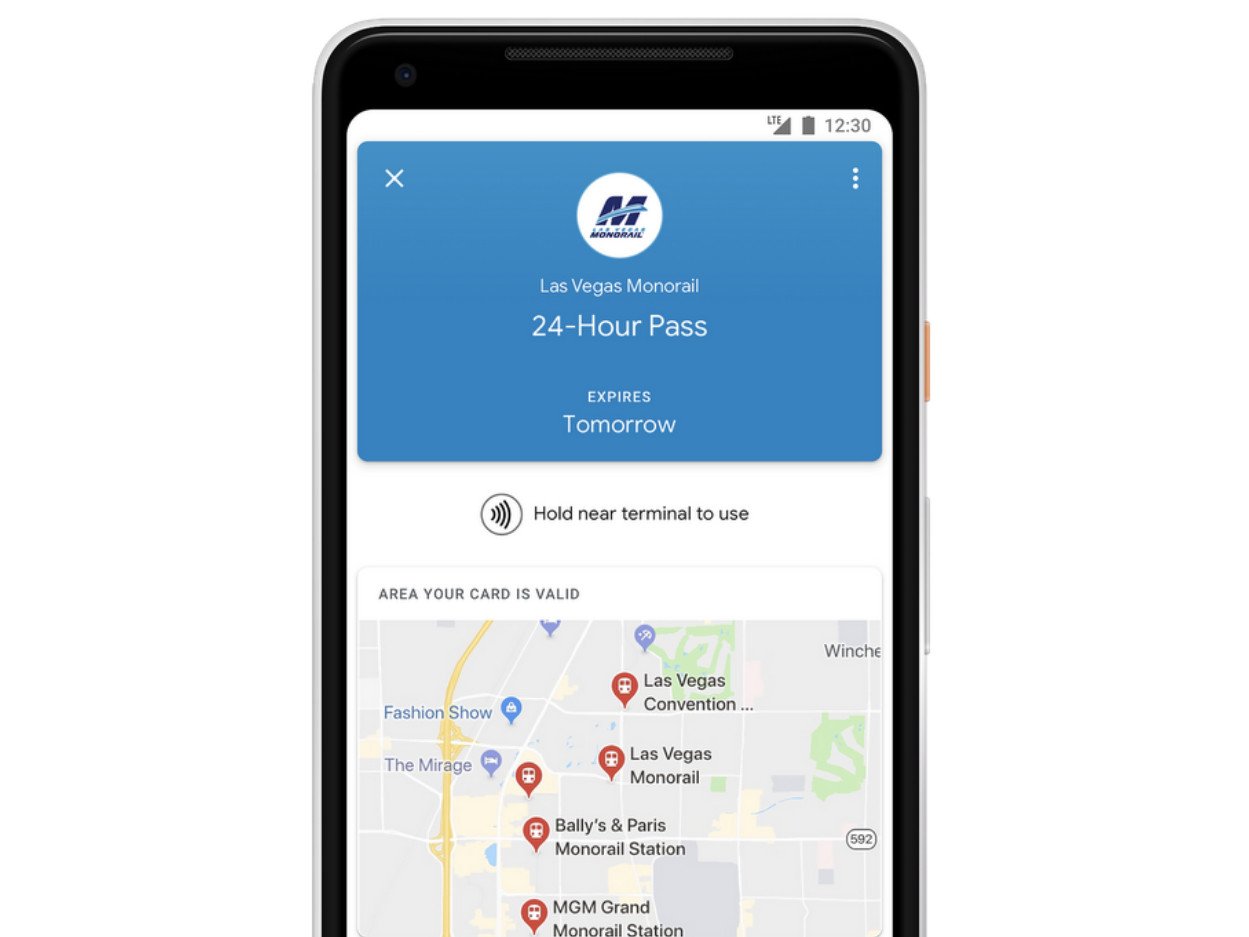Google Pay now supports transit passes and tickets
Starting first with the Las Vegas Monorail.
When
Android Pay was re-branded as Google Pay, it didn't come with any new features. The app was given an updated look with a slightly tweaked UI, but that was about it. However, today Google's taking advantage of the new name by
adding support for transit passes and tickets.
Starting first with the Las Vegas Monorail, you'll be able to add tickets right to the Google Pay app on your phone and travel around the Las Vegas Strip without having to worry about using your debit/credit card.
Tickets live alongside your other cards in Google Pay.
To make this work, all you have to do is buy a ticket or pass from the Las Vegas Monorail website, save it to your phone, and then hold your phone to the NFC terminal at the fare gate. You don't have to open the Google Pay app, as it'll automatically know to bring up your pass when it makes the connection.
Once the ticket is added to Google Pay, you'll see locations it's accepted at, where the nearest station is, and a breakdown of your recent trips.
The Las Vegas Monorail is the first travel/transit company to adopt this new feature, but it's expected that more will follow suit shortly. Obviously the big requirement from the start is having a transit system that accepts NFC, but after that it should be a simple transition to allowing the passes to be virtualized on phones.
If you live in (or more likely, visit) Las Vegas, is this something you'd use?






